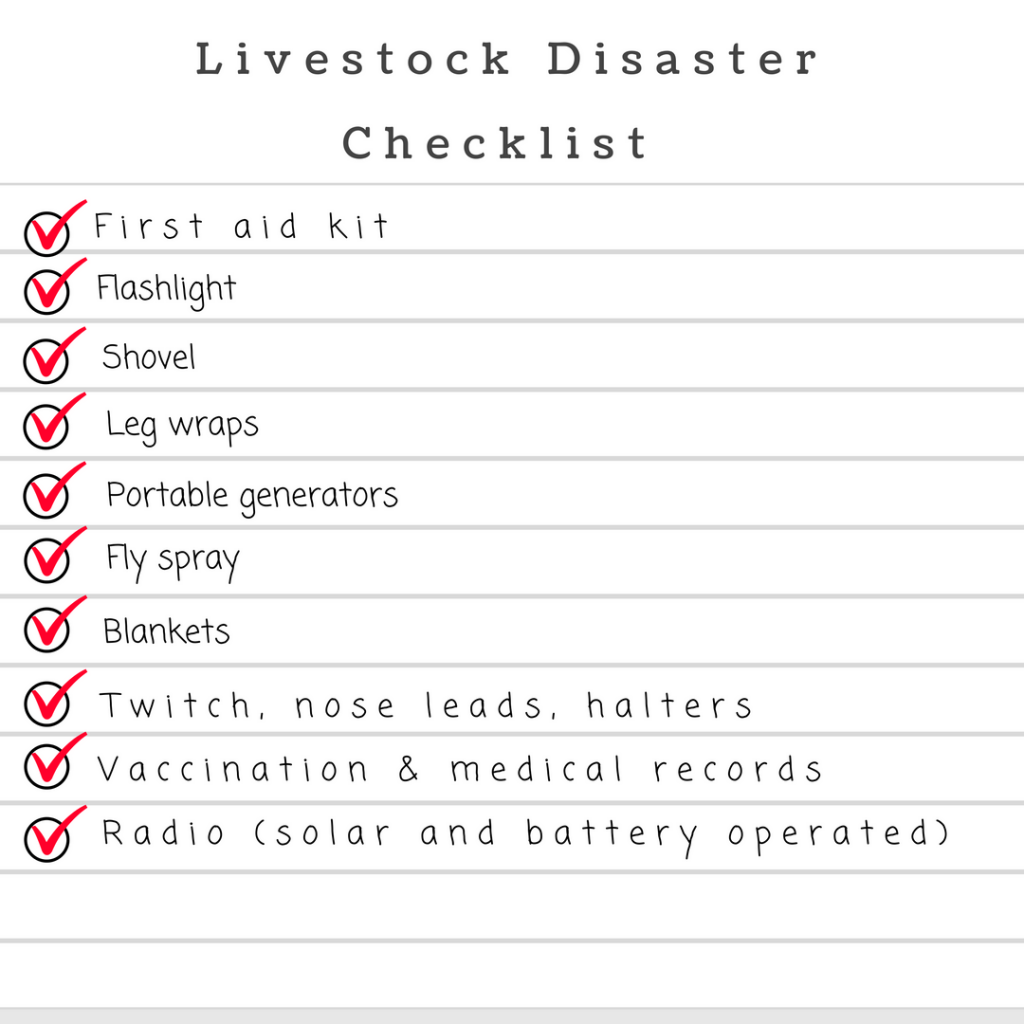5 Effective Ways to Prepare Livestock For Natural Disasters
 The ASPCA determined the leading cause of death for livestock in natural disasters are collapsed barns, kidney failure from dehydration, and electrocution from fencing or fallen power lines. Jeffers recommends that you should consider moving your animals prior to the approach of the storm. However, if this is not an option, here are some tips to make sure your livestock is prepared in the event of inclement weather.
The ASPCA determined the leading cause of death for livestock in natural disasters are collapsed barns, kidney failure from dehydration, and electrocution from fencing or fallen power lines. Jeffers recommends that you should consider moving your animals prior to the approach of the storm. However, if this is not an option, here are some tips to make sure your livestock is prepared in the event of inclement weather.
-
Plan Ahead
 Prepare catch pens and loading chutes for use fill the truck with fuel, hook up to the trailer and place the truck and trailer at the loading area. Make sure you have an adequate supply of feed and hay, not to forget water. A generator is a great tool for sourcing water and can supply energy for lights and other needs. Take measures to keep feed stuffs dry with shelter or tarps that are firmly secured.
Prepare catch pens and loading chutes for use fill the truck with fuel, hook up to the trailer and place the truck and trailer at the loading area. Make sure you have an adequate supply of feed and hay, not to forget water. A generator is a great tool for sourcing water and can supply energy for lights and other needs. Take measures to keep feed stuffs dry with shelter or tarps that are firmly secured.Prepare a medical supply of wound care products: bandages, wound sprays, blood top powder as well as fly repellents and fly sprays. Make arrangements in advance with facility managers or property owners. Electric fences will need to be switched over to solar or battery operated. Check monthly to make sure supplies are up to date. Go ahead and remove animals from areas prone to flooding.
-
Secure and Shelter
 Use what you have to do the best you can. Secure your barns and sheds as best you can by checking roofing that might need some additional support. Swinging gates or barn doors may require some maintenance. Ask friends, relatives, or other livestock producers for a hand and in turn, lend a hand to them. If there is any way possible move endangered animals to a safer location.
Use what you have to do the best you can. Secure your barns and sheds as best you can by checking roofing that might need some additional support. Swinging gates or barn doors may require some maintenance. Ask friends, relatives, or other livestock producers for a hand and in turn, lend a hand to them. If there is any way possible move endangered animals to a safer location.Determine if there are any available shelters that might be available in your area. Examples might include auction barns, fairground facilities, show barns, and arenas. Make sure to contact them ahead of time as these places are limited and fill up fast.
-
Have Livestock Identification
 Develop a plan to identify your livestock. Use high visibility livestock marking paint or marking crayon to place a phone number or farm name on the sides of your livestock. Neck ID-Bands or neck chains and numbers may be used to help prove ownership should your animals be displaced.
Develop a plan to identify your livestock. Use high visibility livestock marking paint or marking crayon to place a phone number or farm name on the sides of your livestock. Neck ID-Bands or neck chains and numbers may be used to help prove ownership should your animals be displaced. -
Having Done All – Stand
 The most important tasks are done- it's time for you to take shelter now. Monitor the weather via radio or television and hunker down.
The most important tasks are done- it's time for you to take shelter now. Monitor the weather via radio or television and hunker down. -
After the Storm
 Assess the damage done to your property and animals. Identify all animals to ensure that none have gone missing. If there are any dead animals, remove them immediately and bury them four feet deep covered with lime to eliminate the spreading of disease. Remove any hazardous material that would immediately pose a threat to you or your animals.
Assess the damage done to your property and animals. Identify all animals to ensure that none have gone missing. If there are any dead animals, remove them immediately and bury them four feet deep covered with lime to eliminate the spreading of disease. Remove any hazardous material that would immediately pose a threat to you or your animals.
If any of your animals are lost or you find a neighbor's animal, contact your local auction barn to list those missing. Natural disasters do not wait so it's better to be prepared than sorry. As livestock are larger animals with varying needs including transportation, your plan will need to be comprehensive and thought ahead of time. The more planning you implement for your animals, the safer they will be in the event of a natural disaster.
